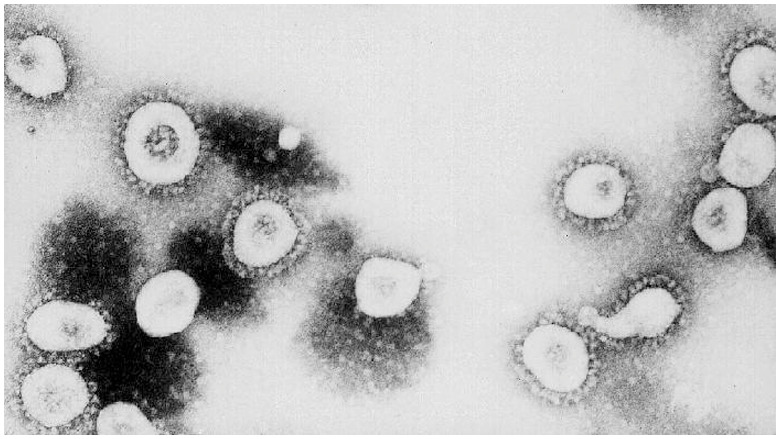
Getty Which disinfectants kill coronavirus?
Most people have heard the advice by now: In addition to washing your hands, using disinfectants to kill coronavirus in your household or workplace is a good idea. Coronavirus can live on surfaces, so you shouldn’t assume they don’t need disinfecting. They do.
The United States Environmental Protection Agency has issued an expanded list of disinfectants and cleaners that it says destroy COVID-19. Some of those disinfectants were approved for other pathogens, but the EPA wrote that it expects they will work on coronavirus too. In addition, the Centers for Disease Control and Prevention says you can use bleach and water to destroy the virus.
“When purchasing a product, check if its EPA registration number is included on this list. If it is, you have a match and the product can be used against SARS-CoV-2. You can find this number on the product label – just look for the EPA Reg. No. These products may be marketed and sold under different brand names, but if they have the same EPA registration number, they are the same product,” the EPA states.
You can find the full list here.
“This list includes products with emerging viral pathogen claims and those with human coronavirus claims. If a product with an emerging viral pathogen claim is not available, use a product with a coronavirus claim. If the product is listed as ‘N’ under the Emerging Viral Pathogen Claim column, then it has a human coronavirus claim,” EPA states, noting, “Inclusion on this list does not constitute an endorsement by EPA. There may be additional disinfectants that meet the criteria for use against SARS-CoV-2. EPA will update this list with additional products as needed.”
There are 274 entries on the EPA’s list.
According to Rutgers University, “The U.S. Centers for Disease Control and Prevention recommends daily disinfection for frequently touched surfaces such as tables, doorknobs, light switches, countertops, handles, desks, phones, keyboards, toilets, faucets and sinks. The CDC also recommends the use of detergent or soap and water on dirty surfaces prior to disinfection.”
Here’s what you need to know:
The EPA Says the Products Were Approved to Kill Viruses That Are Tougher to Kill Than Coronavirus

GettyCoronavirus.
How does the EPA know these products will work? “While these products have not been tested against SARS-CoV-2, the cause of COVID-19, they are expected to be effective based on:
Demonstrated efficacy against a harder-to-kill virus;
Qualified for the emerging viral pathogens claim; or
Demonstrated efficacy against another human coronavirus similar to SARS-CoV-2.
SARS-CoV-2 is a new virus. Such pathogens are often unavailable commercially for laboratory testing,” EPA explains on its website.
Might other products work too? “There may be additional EPA-registered disinfectants not currently on the list that meet the criteria for use against SARS-CoV-2. EPA will update the list with additional products as appropriate. In the meantime, we recommend using products on the list to combat this virus,” the EPA says. “If a disinfectant product doesn’t have an EPA registration number, then EPA has not reviewed any data that shows whether the product kills viruses or bacteria. EPA will not add products to this list that do not have an EPA registration number.”
The EPA list doesn’t include hand sanitizers because those are regulated by a different agency.
How long can coronavirus survive on surfaces? According to BBC, Neeltje van Doremalen, a virologist at the US National Institutes of Health (NIH), and other researchers have conducted such tests, although the research is not yet published. It shows that the virus “could survive in droplets for up to three hours after being coughed out into the air. Fine droplets between 1-5 micrometres in size – about 30 times small than the width of a human hair – can remain airborne for several hours in still air,” BBC reported.
Worse, coronavirus might be able to live for up to 24 hours on cardboard and 2-3 days on plastic of stainless steel, BBC reported.
What about a mobile phone? Oregon Live reported that, according to Samsung and Apple, you can wipe the screen with a “soft, slightly damp, lint-free microfiber cloth” and if it’s especially dirty use warm soapy water. Apple also says you can use Clorox wipes “or other alcohol wipes that contain 70% isopropyl alcohol,” Oregon Live reports, adding that you shouldn’t use rubbing alcohol or a disinfectant wipe.
Rutgers lists directions for using bleach, writing, “Bleach can be diluted with cold water to make an effective disinfectant against bacteria, fungi and many viruses including coronaviruses. You can typically use ¼ cup of bleach per 1 gallon of cold water – but be sure to follow the directions on the label of your bleach. Make dilute bleach solution as needed and use it within 24 hours, as its disinfecting ability fades with time. Non-porous items like plastic toys can be immersed in bleach for 30 seconds. Household surfaces that won’t be damaged by bleach should get 10 or more minutes of exposure. Bleach solutions are very hard on the skin, and should not be used as a substitute for handwashing and/or hand sanitizer.”
As for alcohol, according to Rutgers: “Alcohol in many forms, including rubbing alcohol, can be effective for killing many pathogens. You can dilute alcohol with water (or aloe vera to make hand sanitizer) but be sure to keep an alcohol concentration of around 70% to kill coronaviruses. Many hand sanitizers have a concentration of about 60% alcohol, and Lysol contains about 80%; these are all effective against coronaviruses.”
READ NEXT: Can You Get Coronavirus From Money?
